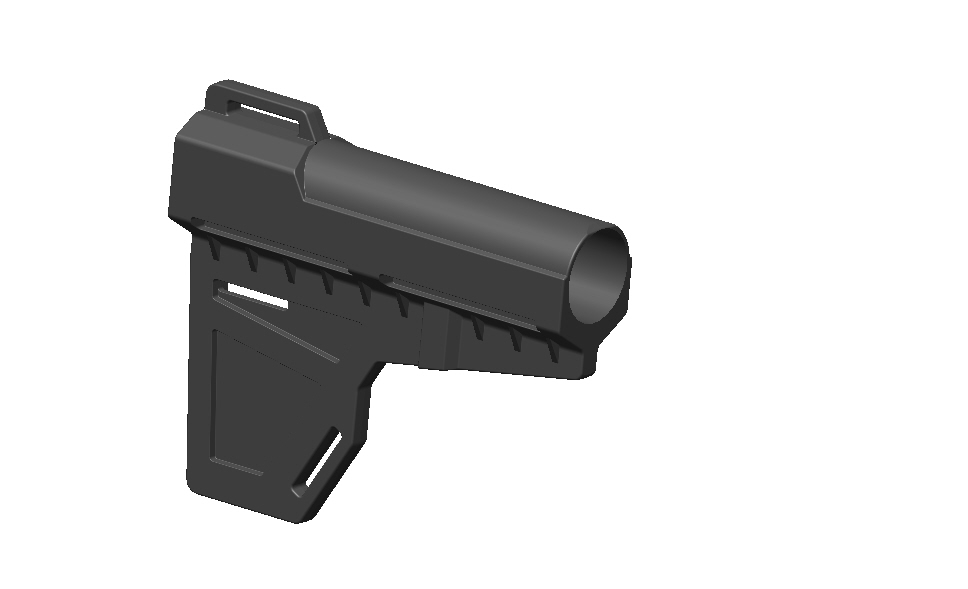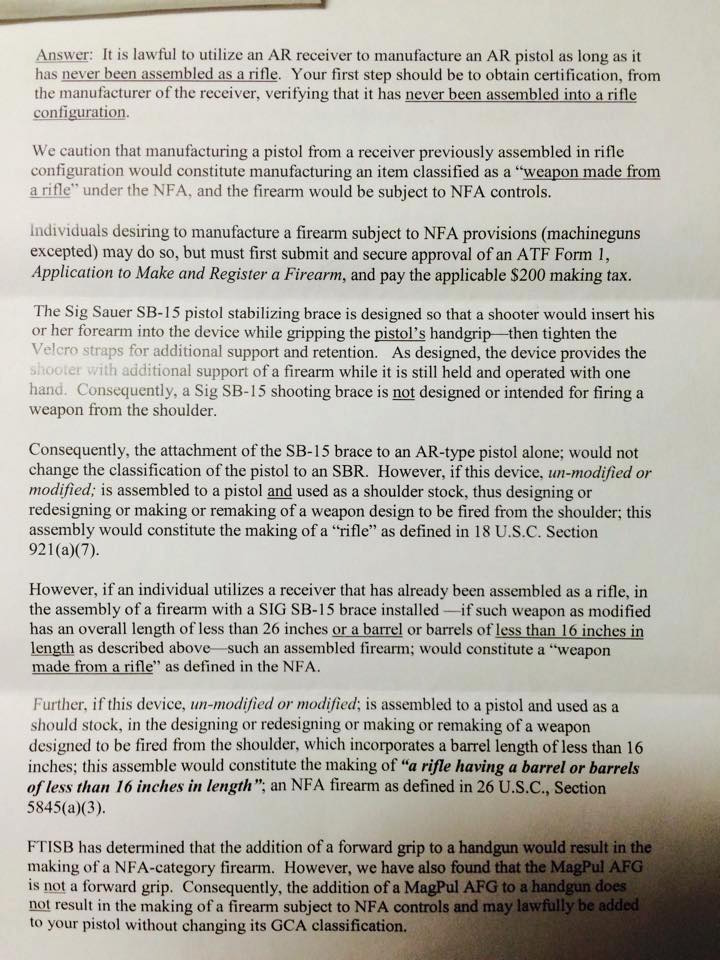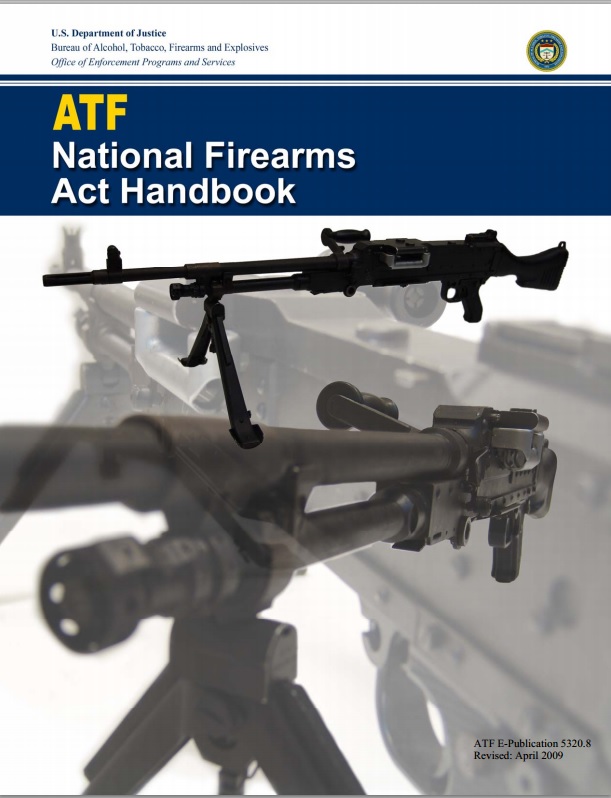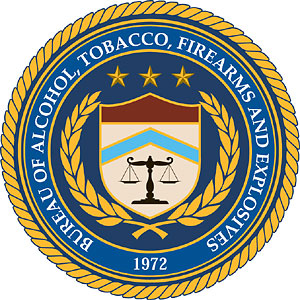More BATFE Letters in the News . . . What Do They Mean?

New Shockwave Blade Pistol Stabilizer retrieved from shockwavetechnologies.com on December 21, 2014.
As if the stabilizing brace craze hasn’t caused enough controversy, this weekend we have seen yet another development unfold. If you happen to be unfamiliar with the situation, you might want to check out our previous posts [ SB 15: Stabilizing Brace or Illegal Short Barrel? and BATFE SAYS NEW BLADE STABILIZER ≠ SIG’S STABILIZING BRACE ] to help bring yourself up to speed. Here’s the short version:
- November 26, 2012: SB-15 does not subject a firearm to NFA restrictions.
- March 5, 2014: firing [an AR-15 type] pistol from the shoulder with the SB 15 does not subject the firearm to NFA restrictions.
- November 14, 2014: Using the SB 15 as a shoulder stock with Black Aces’ shotgun DOES subject the firearm to NFA restrictions.
- December 15, 2014: Using the Shockwave Blade Pistol Stabilizer as a shoulder stock DOES subject the firearm to NFA restrictions.
Now, in a letter dated November 10, 2014, but just recently made available to the public, BATFE provided yet another opinion letter addressing the SB 15. This time, an individual appears to have inquired about adding the SB 15 to an AR-15 pistol utilizing a frame marked as “other,” a Noveske Flaming Pig flash suppressor, and a MagPul AFG fore grip. Given these specifications, this wasn’t your run of the mill “slap an SB 15 onto a pistol” case.

Retrieved from http://cdn5.gunssavelives.net/wp-content/uploads/2014/12/O7EOpTm.jpg on December 28, 2014.
In this instance, BATFE’s reply indicated that “if this device, un-modified or modified; is assembled to a pistol and used as a shoulder stock, thus designing or redesigning or making or remaking of a weapon design to be fired from the shoulder; this assembly would constitute the making of a “rifle” as defined in 18 U.S.C. Section 921(a)(7).”
There have been a number of different opinions regarding the seemingly contradictory opinions. Many have voiced disdain for the recent opinion, taking the position that it does in fact conflict with BATFE’s previous opinion letters. Contrarily, Nick Leghorn contends that the opinions may have not been contradictory at all. See http://www.thetruthaboutguns.com/2014/12/foghorn/calm-pistol-brace-ruling-hasnt-changed/.
Our take on it
Rather than adding more of the same to the discussion, we have decided to step back and take a look at what this all means. While the LAGO community has spent a significant amount of time dissecting BATFE’s opinion letters, we have devoted little to no discussion —and perhaps even thought— to the legal effects BATFE’s opinion letters really have. They are neither statutes, nor regulations, nor case law. So what are they?
This is addressed directly from the ATF’s NFA Handbook:
7.2.4.1 ATF classification letters. ATF letter rulings classifying firearms may generally be relied upon by their recipients as the agency’s official position concerning the status of the firearms under Federal firearms laws. Nevertheless, classifications are subject to change if later determined to be erroneous or impacted by subsequent changes in the law or regulations. To make sure their classifications are current, FFLs/SOTs should stay informed by periodically checking the information published on ATF’s website, particularly amendments to the law or regulations, published ATF rulings, and “open letters” to industry members.
The explanation isn’t entirely clear.
The fact that these classification letters “may generally be relied upon” appears to indicate BATFE’s open acknowledgement that classification letters do not necessarily hold the force of law. Keeping that in mind, BATFE —as a part of the Department of Justice— is vested with congressional authority to enforce firearms laws, including those provided by the NFA. As a result, those who do not wish to be prosecuted should heed to BATFE’s interpretations.
Even though BATFE classification letters represent the official position of those with the authority to enforce federal firearms laws, they are not necessarily the final say. If BATFE makes a determination that does not seem to reflect the federal firearms laws on the books, such a determination can be challenged in federal court.
This is precisely what happened in Innovator Enterprises, Inc. v. Jones. https://ecf.dcd.uscourts.gov/cgi-bin/show_public_doc?2013cv0581-17. Innovator had submitted a sample of their Stabilizer Brake (not to be confused with the completely different, but just as controversial, Stabilizing Brace) for classification. As the Stabilizer Brake does not suppress sound, but rather redirects it, it appeared that BATFE would not determine that it is subject to the NFA. In fact, BATFE did classify the Stabilizer Brake as a silencer subject to the NFA, citing a few of its physical characteristics. Disagreeing with the classification, Innovator challenged this classification in federal court.
In bringing BATFE’s determinations to the court, the challenger will face an uphill battle. Under federal law, a court must “hold unlawful and set aside agency action, findings, and conclusions” if they are “arbitrary, capricious, an abuse of discretion, or otherwise not in accordance with law.” 5 U.S.C. § 706(2)(A). Innovator at 6. However, “ the ‘scope of review under the ‘arbitrary and capricious’ standard is narrow and a court is not to substitute its judgment for that of the agency.’” Innovator quoting Motor Vehicle Mfrs. Ass’n of U.S., Inc. v. State Farm Mut. Auto. Ins. Co., 463 U.S. 29, 43 (1983).
Accordingly, the court will review the process BATFE uses to make its determination, rather than the determination itself. In Innovator, the court expressly recognized its ineptitude to classify complicated firearms. For this very reason, the plaintiff withdrew its claim for declaratory judgment. However, this did not prevent the court from evaluating whether BATFE provided a thorough fact-finding and well-reasoned analysis in its determination. The Court found that BATFE did not utilize its available resources in classifying the Stabilizer Brake, and that its reasoning —which relied solely on certain physical characteristics— was flawed. Ultimately, the court struck down BATFE’s classification, remanding it back to BATFE for a more reasoned determination. Asserting that BATFE is better equipped and more qualified to make classifications, the court essentially told BATFE to “try again.”
It is important to keep in mind that BATFE’s classification letters specifically note that they only pertain to the particular product under evaluation, and the particular surrounding circumstances. These determinations seem to vary being heavily fact-dependent. In the midst of the controversy surrounding the recent BATFE determinations, if any manufacturers disagree with BATFE’s reasoning and evaluation, we may see another challenge in court.





